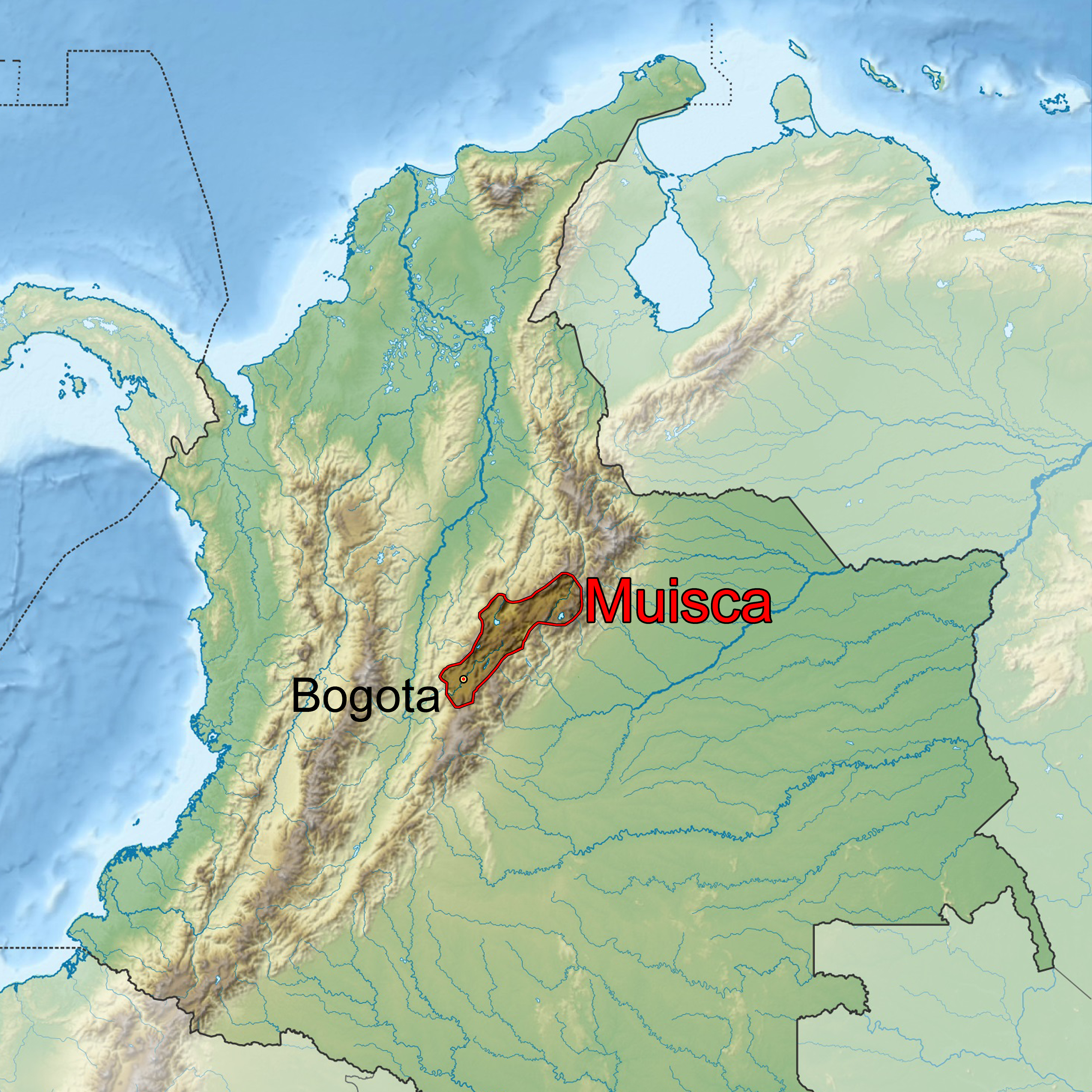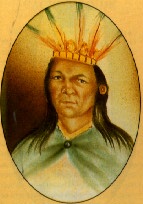|
Tibiritá
Tibirita is a municipality and town of Colombia in the department of Cundinamarca. Tibirita is situated on the Altiplano Cundiboyacense at a distance of from the capital Bogotá. It borders Villapinzón in the north, in the east La Capilla ( Boyacá), in the south Guateque (Boyacá) and in the west Manta, Machetá and Chocontá.Official website Tibirita - accessed 07-05-2016 History The area of Tibiritá was populated by the before the in the 1530s. The village was r ...[...More Info...] [...Related Items...] OR: [Wikipedia] [Google] [Baidu] |
Muisca Confederation
The Muisca Confederation was a loose confederation of different Muisca rulers (''zaques'', ''zipas'', '' iraca'', and ''tundama'') in the central Andean highlands of present-day Colombia before the Spanish conquest of northern South America. The area, presently called Altiplano Cundiboyacense, comprised the current departments of Boyacá, Cundinamarca and minor parts of Santander. According to some Muisca scholars the Muisca Confederation was one of the best-organized confederations of tribes on the South American continent. Modern anthropologists, such as Jorge Gamboa Mendoza, attribute the present-day knowledge about the confederation and its organization more to a reflection by Spanish chroniclers who predominantly wrote about it a century or more after the Muisca were conquered and proposed the idea of a loose collection of different people with slightly different languages and backgrounds.Gamboa Mendoza, 2016 Geography Climate Muisca Confederation In the time ... [...More Info...] [...Related Items...] OR: [Wikipedia] [Google] [Baidu] |
Spanish Conquest Of The Muisca
The Spanish conquest of the Muisca took place from 1537 to 1540. The Muisca were the inhabitants of the central Andean highlands of Colombia before the arrival of the Spanish conquistadors. They were organised in a loose confederation of different rulers; the '' psihipqua'' of Muyquytá, with his headquarters in Funza, the '' hoa'' of Hunza, the ''iraca'' of the sacred City of the Sun Sugamuxi, the Tundama of Tundama, and several other independent ''caciques''. The most important rulers at the time of the conquest were ''psihipqua'' Tisquesusa, ''hoa'' Eucaneme, ''iraca'' Sugamuxi and Tundama in the northernmost portion of their territories. The Muisca were organised in small communities of circular enclosures (''ca'' in their language Muysccubbun; literally "language of the people"), with a central square where the '' bohío'' of the ''cacique'' was located. They were called "Salt People" because of their extraction of salt in various locations throughout their territories, ma ... [...More Info...] [...Related Items...] OR: [Wikipedia] [Google] [Baidu] |
Manta, Cundinamarca
Manta is a municipality and town located in the northeast of the department of Cundinamarca (Colombia), from Bogotá. It is located in the Almeidas Province in the Tenza Valley. Manta borders to the north Tibiritá, to the west Machetá, to the south Gachetá and to the east Guateque and Guayatá of the department of Boyacá. Etymology Manta in the Chibcha language of the Muisca means "to your tillage" or "your farmfields".Espejo Olaya, 1999, p.1121 This name comes from the ancient indigenous people who inhabited the territory of the Muisca Confederation. Another Muisca name that remains is the name of the ''vereda'' Fuchatoque, located on the eastern side of the city center, headquarters of the former ''cacique'' with the same name. History Pre-Columbian and colonial period The first inhabitants, indigenous Muisca, settled in pre-Columbian times, around the plateau of the current town centre, which was once a small lake. According to the founding myth in the center of t ... [...More Info...] [...Related Items...] OR: [Wikipedia] [Google] [Baidu] |
Villapinzón
Villapinzón is a municipality and town of Colombia in the Almeidas Province, part of the department of Cundinamarca. The urban centre is situated at an elevation of on the Altiplano Cundiboyacense, at a distance of from the capital Bogotá. Villapinzón borders Ventaquemada ( Boyacá) and Lenguazaque in the north, Chocontá, Tibiritá and La Capilla in the south, Chocontá and Lenguazaque in the west and Ventaquemada, Turmequé and Úmbita in the east. The municipality is located in the uppermost part of the Bogotá River Basin; the origin of the river is within the municipality Villapinzón at an elevation of . Etymology Villapinzón was named Hato Viejo for most of its history. In 1903, the name was changed to "Pinzón", honouring Próspero Pinzón Romero, commander of the army and Minister of War of Colombia under Colombian president José Manuel Marroquín Jose Manuel Cayetano Marroquín Ricaurte (August 6, 1827 – September 19, 1908) was a Colombian political ... [...More Info...] [...Related Items...] OR: [Wikipedia] [Google] [Baidu] |
Muisca People
The Muisca (also called Chibcha) are an indigenous people and culture of the Altiplano Cundiboyacense, Colombia, that formed the Muisca Confederation before the Spanish conquest. The people spoke Muysccubun, a language of the Chibchan language family, also called ''Muysca'' and ''Mosca''. They were encountered by conquistadors dispatched by the Spanish Empire in 1537 at the time of the conquest. Subgroupings of the Muisca were mostly identified by their allegiances to three great rulers: the '' hoa'', centered in Hunza, ruling a territory roughly covering modern southern and northeastern Boyacá and southern Santander; the '' psihipqua'', centered in Muyquytá and encompassing most of modern Cundinamarca, the western Llanos; and the ''iraca'', religious ruler of Suamox and modern northeastern Boyacá and southwestern Santander. The territory of the Muisca spanned an area of around from the north of Boyacá to the Sumapaz Páramo and from the summits to the western p ... [...More Info...] [...Related Items...] OR: [Wikipedia] [Google] [Baidu] |
Guateque
Guateque is a town and municipality in the Colombian Department of Boyacá, part of the subregion of the Eastern Boyacá Province. Guateque's urban center is located at an altitude of on the Altiplano Cundiboyacense at distances of from the department capital Tunja and from Bogotá, capital of Colombia. It borders the municipalities of La Capilla, Tenza, Sutatenza, Somondoco of Boyacá and Tibiritá and Manta of Cundinamarca.Official website Guateque Etymology Guateque is derived from the original name ''Guatoc'', meaning "Stream of the ravine" or "Lord of the winds".- Excelsio.net History In t ...[...More Info...] [...Related Items...] OR: [Wikipedia] [Google] [Baidu] |
Municipalities Of Colombia
The Municipalities of Colombia are decentralized subdivisions of the Republic of Colombia. Municipalities make up most of the departments of Colombia with 1,122 municipalities (''municipios''). Each one of them is led by a mayor (''alcalde'') elected by popular vote and represents the maximum executive government official at a municipality level under the mandate of the governor of their department which is a representative of all municipalities in the department; municipalities are grouped to form departments. The municipalities of Colombia are also grouped in an association called the ''Federación Colombiana de Municipios'' (Colombian Federation of Municipalities), which functions as a union under the private law and under the constitutional right to free association to defend their common interests. Categories Conforming to the law 1551/12 that modified the sixth article of the law 136/94 Article 7 http://www.alcaldiabogota.gov.co/sisjur/normas/Norma1.jsp?i=48267 the mu ... [...More Info...] [...Related Items...] OR: [Wikipedia] [Google] [Baidu] |
Almeidas Province
Almeidas Province ( es, Provincia de Almeidas, ) is one of the 15 provinces in the Cundinamarca Department, Colombia. Almeidas borders to the east with the Boyacá Department to the north with the Ubaté Province, to the west with the Central Savanna Province and to the south with the Guavio Province. Subdivision Almeidas is subdivided into 7 municipalities A municipality is usually a single administrative division having corporate status and powers of self-government or jurisdiction as granted by national and regional laws to which it is subordinate. The term ''municipality'' may also mean the go ...:Orden en las provincias de Cundinamarca - El Tiempo Referenc ...
|
Machetá
Machetá is a municipality and town of Colombia in Almeidas Province of the department of Cundinamarca. Machetá is situated on the Altiplano Cundiboyacense at from the capital Bogotá and from Tunja. It borders Tibiritá and Manta in the east, Chocontá and Sesquilé in the west and Guatavita and Gachetá in the south.Official website Machetá Etymology In the of the Muisca, Machetá means "Your honourable farmfields".History Machetá in the times before the |
Tunja
Tunja () is a city on the Eastern Ranges of the Colombian Andes, in the region known as the Altiplano Cundiboyacense, 130 km northeast of Bogotá. In 2018 it had a population of 172,548 inhabitants. It is the capital of Boyacá department and the Central Boyacá Province. Tunja is an important educational centre of well-known universities. In the time before the Spanish conquest of the Muisca, there was an indigenous settlement, called Hunza, seat of the ''hoa'' Eucaneme, conquered by the Spanish conquistadors on August 20, 1537. The Spanish city was founded by captain Gonzalo Suárez Rendón on August 6, 1539, exactly one year after the capital Santafé de Bogotá. The city hosts the most remaining Muisca architecture: Hunzahúa Well, Goranchacha Temple and Cojines del Zaque. Tunja is a tourist destination, especially for religious colonial architecture, with the Casa Fundador Gonzalo Suárez Rendón as oldest remnant. In addition to its religious and historical sites it ... [...More Info...] [...Related Items...] OR: [Wikipedia] [Google] [Baidu] |
1593 Establishments In The Spanish Empire
Events January–December * January – Siege of Pyongyang (1593): A Japanese invasion is defeated in Pyongyang by a combined force of Korean and Ming troops. * January 18 – Siamese King Naresuan, in combat on elephant back, kills Burmese Crown Prince Mingyi Swa on Monday, Moon 2 Waning day 2, Year of the Dragon, Chulasakarat 954, reckoned as corresponding to January 25, 1593, of the Gregorian calendar, and commemorated as Royal Thai Armed Forces Day. * January 27 – The Roman Inquisition opens the seven-year trial of scholar Giordano Bruno. * February 2 – Battle of Piątek: Polish forces led by Janusz Ostrogski are victorious. * February 12 – Battle of Haengju: Korea defeats Japan. * March 7 (February 25 Old Style) – The Uppsala Synod discontinues; the Liturgical Struggle between the Swedish Reformation and Counter-Reformation ends in Sweden. * March 14 – The Pi Day, giving the most digits of Pi when written in ''mm/dd/y ... [...More Info...] [...Related Items...] OR: [Wikipedia] [Google] [Baidu] |
Populated Places Established In 1593
Population typically refers to the number of people in a single area, whether it be a city or town, region, country, continent, or the world. Governments typically quantify the size of the resident population within their jurisdiction using a census, a process of collecting, analysing, compiling, and publishing data regarding a population. Perspectives of various disciplines Social sciences In sociology and population geography, population refers to a group of human beings with some predefined criterion in common, such as location, race, ethnicity, nationality, or religion. Demography is a social science which entails the statistical study of populations. Ecology In ecology, a population is a group of organisms of the same species who inhabit the same particular geographical area and are capable of interbreeding. The area of a sexual population is the area where inter-breeding is possible between any pair within the area and more probable than cross-breeding with in ... [...More Info...] [...Related Items...] OR: [Wikipedia] [Google] [Baidu] |




